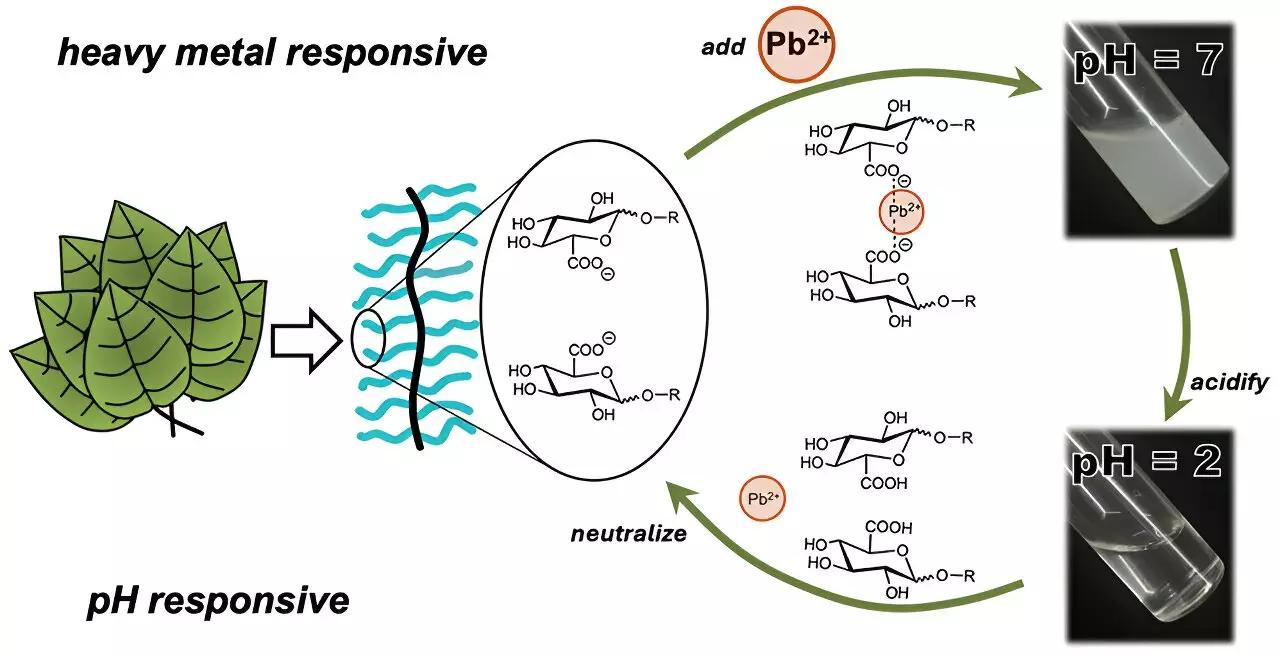Heavy metal contamination in water bodies is an increasing concern, presenting significant threats to both human health and aquatic ecosystems. Contaminants such as cadmium and lead are notorious for their toxicity, especially when their concentrations exceed safety thresholds in drinking water. These metals do not degrade and can accumulate over time, making their removal from water a critical issue. Traditional methods, such as filtration, are often inefficient and energy-intensive, and many rely on membrane technologies that require frequent replacement due to clogging. Thus, the pursuit of innovative and more sustainable approaches for water purification has garnered substantial scientific interest.
Researchers have sought to harness biological materials to tackle heavy metal pollution effectively. One promising avenue lies in the use of polysaccharides, natural polymers found within plants that offer significant potential for water treatment applications. These macromolecules consist of repeating units of sugar and can effectively trap metal ions due to their structural properties. Previous studies have revealed the capability of polysaccharide extracts from certain plants, such as okra and aloe, to remove pollutants like microplastics from wastewater. However, challenges such as solubility in water have hindered the practical application of these natural polymers.
To overcome these limitations, researchers at the University of Texas at Austin have engineered a novel polymer designed specifically for the task of heavy metal removal from contaminated water. This innovative material features a water-insoluble backbone complemented by various water-soluble carbohydrate ‘charms’ that enhance its metal-binding capabilities.
The research team, led by Cassandra Callmann, strategically constructed multiple polymer variants to optimize the binding efficiency of metal ions. Among the designs, the variant containing a carboxylic acid group emerged as the most effective for attracting and holding ionic cadmium. In preliminary experiments with water spiked with ionic cadmium, this particular polymer exhibited remarkable performance, forming visible clumps capable of easy filtration within just three minutes of exposure.
Additionally, one of the significant advantages of this polymer is its reversible nature; by slightly adjusting the acidity of the environment, the metal-laden clumps can be redissolved, allowing for the potential recovery of both the contamination and the polymer for reuse. This ability to maintain effectiveness even after multiple cycles of binding and releasing highlights the polymer’s prospects as a sustainable solution for ongoing water purification needs.
To further validate the potential of their polymer, the research team conducted proof-of-concept tests using river water samples spiked with cadmium and lead. The Colorado River, which contains higher concentrations of natural ionic substances like calcium, sodium, and magnesium, served as the testing ground. The polymer’s adeptness was showcased as it captured up to 20% of cadmium and an impressive 45% of lead within a 24-hour timeframe. This efficiency, along with minimal interference from other metal ions, establishes the polymer’s promising application for real-world contamination scenarios.
The research signifies a pivotal step toward developing more selective and effective materials for water purification. The ecological impact and advantages of using plant-derived polymers not only enhance removal efficiency but potentially minimize the environmental footprint associated with conventional water treatment methods. As pollution levels rise globally, it is imperative to continue exploring innovative solutions like the one developed by Callmann and her team to ensure clean, safe drinking water for humans and healthy ecosystems for aquatic life.
The race against water pollution necessitates the integration of advanced materials science with biological insights. The design of this sugar-like polymer exemplifies how interdisciplinary research can pave the way for sustainable innovations that hold the promise of improving public health and environmental safety, ensuring a cleaner future for generations to come.


Leave a Reply